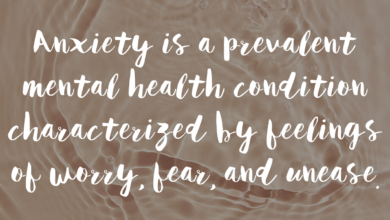Obsessional Doubt and Uncertainty: Are They Really

We have seen an explosion of interest, questions, concerns and stimulating debate since the arrival of Inferential Cognitive Behavioral Therapy for OCD (I-CBT) in the USA. One question stands out in high relief from others. Two factors may account for this. (1) It’s been raised by many in our OCD professional community and (2) this question is foundational to understanding the theory of I-CBT and treatment process.
How do we distinguish between obsessional doubt and uncertainty in I-CBT?
Uncertainty in I-CBT
Uncertainty is a response to events which are going to happen or to situations in which there is insufficient information. Gathering the relevant facts resolves the uncertainty. *
Occasionally there may be an instance when the full facts are unavailable. In those cases, it is necessary to accept that the pertinent facts are not accessible. (O’Connor and Aardema, 2012)
My dog has been shaking his head. Also scratching his right ear. There are times when he does this a bit and stops. He’s been doing both more than usual, so I’m concerned. I think he might have an allergy or an ear infection. Hopefully nothing worse.
I took him to the vet. The vet examined him, cleaned his ears, and took a sample to look under the microscope. She diagnosed him with a bacterial infection. She treated him with medication.
Obsessional Doubt in I-CBT
This occurs when realistic information is dismissed in favor of irrelevant information. In other words, realistic information is available and is perceived. However, once the doubting process gets under way, it is so compelling that perception of the present has lost importance.
Typically, irrelevant information is based on possibilities. Possibilities usually begin with thoughts or statements such as, “What if”, “It could be”, “Maybe”, and involve, 1. ideas or images of what could happen at any moment, in the distant future, in the past, with friends/family/strangers/self, and so on. Obsessional doubt includes 2. faulty reasoning 3. justifying the doubt based on reasons that have no direct bearing on the situation at hand, no evidence in present and 4. trying to (unsuccessfully) resolve the doubt with more questions, justifications for the doubt, rituals, and compulsions. (O’Connor & Aardema, 2012)
These processes are generated by the person. They do not “happen to” the person even though it can feel that way.
My dog was shaking his head and scratching his right ear. I was worried so I took him to the vet. She examines him, looks in his ear and takes a sample to see it under the microscope. She says he has a bacterial ear infection. After cleaning his ear, she treats the ear with medication.
She’s an excellent vet and I’m inclined to trust her. But what if she missed something important. One of my neighbors told me that her dog was diagnosed with terminal cancer. It’s common knowledge that even the best doctors can make mistakes.
My dog seemed to have improved somewhat by the next day. I think I’ll get a second opinion just to make sure. I’d feel terrible if it turned out there was something else wrong with him and I didn’t get him the right care. There’s a specialty animal hospital not too far from me. I’m calling now for an appointment.
Questions
-
Review the example of uncertainty. Do you think that once pertinent information was acquired uncertainty was no longer present?
-
Review the example of obsessional doubt. Try to identify the point at which there is acknowledgement of realistic information about the dog. When does obsessional doubt start? Can you identify the reasons given to justify the doubt? Are there any compulsions? What would you say is the “primary fear”? Do you see how doubt and its justifications override confidence in the relevant information about the dog?
Exercise
-
Write a brief story, real or fiction, about a situation when you were faced with a situational problem. You didn’t have the information you needed to solve the problem, but you did know where/how to get that information. Include something about where or from whom you got the information you needed and whether the problem was solved.
-
Use the above story to turn it into one that veers off into obsessional doubt. Does obsessional doubt create more doubt? In the process there is probably inferential confusion. Do you see how the doubt and confusion make it extremely hard to get back to the real situation at the moment?
*NB: Uncertainty in I-CBT should be distinguished from intolerance of uncertainty, which at its core is understood as a fear of the unknown. This is a transdiagnostic vulnerability that can be present in anxiety disorders, OCD, depressive disorders and eating disorders. (Einstein, 2014)
For more information on I-CBT go to: www.icbt.online
You will find a wide range of rich resources that include research publications, treatment articles, podcasts, videos on theory and practice, training, and more.
If you would like to contact Susan Wagner, Ph.D. with questions or comments you can email her at:
References:
Einstein, D.A. (2014) Extension of the Transdiagnostic Model to Focus on Intolerance of Uncertainty: A Review of the Literature and Implications for Treatment. Clinical Psychology Science and Practice, 25 September
O’Connor, K, Aardema, F. Clinician’s Handbook Obsessive Compulsive Disorder. Wiley, 2012
This post is presented in collaboration with ADAA’s OCD and Related Disorders SIG. Learn more about the SIG.
Source link
#Obsessional #Doubt #Uncertainty

